





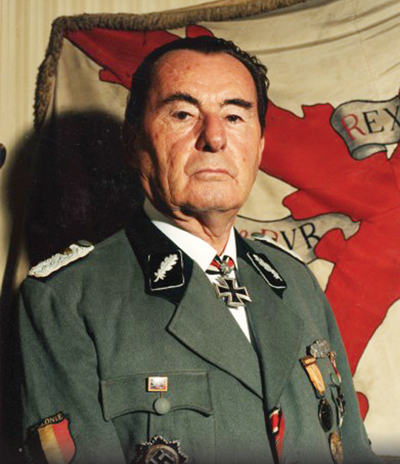
'The peasants were just simple people who had suffered under Stalin and the great promises of Communism, and they were, for the most part very supportive of us.
[Above: Ancient Inca artifact.]
[Above: Note the many stiff arm salutes by the athletes. Circa 1938.]
[Above: Women giving the stiff arm salute. Circa 1938.]
[Above: This poster advertises 'Juegos Deportivos Bolivarianos' (Bolivian Sports Games), August 6-22, 1938.]
[Above: This poster also advertises 'Juegos Deportivos Bolivarianos' (Bolivian Sports Games), August 6-22, 1938.]
[Above: The armed wing of the conservative National Revolutionary Movement political party in 1952. Note their stahlhelms.]
[Above: Bolivian soldiers with stahlhelm M35 helmets and M16 rifles.]
[Above: Symbol of the Flemish National Union, V.N.V.]
[Above: Reimond Tollenaere.]
[Above: Reimond (left) and presumably his brother-in-law Hendrik Jozef Demoen (September 6, 1895 - March 8, 1969) with unknown woman in center.]
[Above: Postcard of Reimond Tollenaere in Waffen-SS visor cap.]
[Above: Reimond's funeral, a hero's farewell.]
[Above: Close-up.]
[Above: Further honoring Reimond Tollenaere.]
[Above: Reimond Tollenaere's grave in the frozen fields of the Eastern Front.]
[Above: Reimond Tollenaere's 'death card' announcing his martyrdom.]
[Above: Newspaper announcing Reimond Tollenaere's death. 'Reimond Tollenaere Fallen - In the service of the people and the fight against Bolshevism.']
[Above: A medal was issued in honor of Reimond's death. 'Trouw' = loyalty.]
[Above: Tollenaere Honor Badge in use. There were two types of this badge, bronze (pictured) and silver (although there is no evidence this was ever issued).]
[Above: On the occasion of Reimond Tollenaere's 100th birthday, a family member speaks at a memorial.]
[Above: VNV poster showing Staf De Clercq.]
[Above: VNV poster by famed artist Frans Van Immerseel.]
[Above: Balinese coat of arms, which appears on their national flag.]
[Above: German aircraft and Balinese girls, January 1938.]
[Above: I Gusti Ngurah Rai (January 30, 1917 – November 20, 1946).]
In August 1945 Balinese freedom fighters decided death was preferable to slavery. The Japanese showed them a taste of freedom and they weren't about to go back to the old ways of colonialism.
Following the defiant Indonesian Declaration of Independence Ngurah Rai established the People's Security Army. After receiving orders in the capital, Yogyakarta (Java, Indonesia) he returned to Bali to oppose the approximately 2,000 Dutch troops who had landed on March 2nd and 3rd of 1946.
[Above: I Gusti Ngurah Rai.]
In the following days the Dutch contacted Nguraha Rai and attempted to get him to back down, whatever concessions they offered him he flatly refused. They couldn't pay him off or scare him.
On November 20, 1946, the Dutch launched a large attack on Marga (a district in Bali) with the assistance of troops from Lombok (a nearby island) and supported by aircraft. Lt. Col Ngurah Rai ordered a fight to the death, no retreat, no surrender.
[Above: Painting of I Gusti Ngurah Rai.]
I Gusti Ngurah Rai died with his men in what would be known as the Battle of Margarana. Ninety six men died with Ngurah Rai that bloody day. It has since been characterized by Balinese writers as what is known as 'Puputan'. Puputan is a Balinese term that refers to a mass ritual suicide in preference to facing the humiliation of surrender. There were numerous other puputans during Dutch occupation.
Today I Gusti Ngurah Rai is seen as great hero and martyr, deeply revered for his courage and sacrifice. The main airport on Bali is even named after him.
[Above: Statue of I Gusti Ngurah Rai, Bali.]
[Above: I Gusti Ngurah Rai featured on a 2005 50,000 rupiah banknote.]
[Above: Flag of Iceland.]
[Above: Flokkur Žjóšernissinna armband variation.]
[Above: The Flokkur Žjóšernissinna on the march. Note the swastika party flags mixed with flags of Iceland.]
[Above: Party rally.]
Although information is scarce, it seems that sometime in 1934 the two defunct organizations joined forces and formed a new party called 'Flokkur Žjóšernissinna'. It is estimated that around 450 - 500 men were members. The party had several subdivisions in many towns and cities throughout Iceland (including places like Vestmannaeyjar, Siglufjöršur and Ķsafjöršur). During its life the party had four leaders.
In 1936 the party managed to get their hands on the scandalous diary of the Minister of Finance and published details in the party newspaper Ķsland. In retaliation for this embarrassment the government raided the party's offices and a number of leading members were arrested, but there were no convictions and the men were set free.
In 1939 the party published 'Aims of the Nationalist Party', their last major publication, which was their manifesto. During the winter of 1939/1940 they also organized a debating club in the capital city, where local cells could get together and discuss ideas and current events.
The Flokkur Žjóšernissinna carried on until the mid-1940s, but after the British invasion and occupation of Iceland in 1940 the party no doubt went underground. By 1945 and the end of the war the party was no more.
[Above: One of Flokkur Žjóšernissinna's periodicals 'Mjölnir' (Thor's hammer).]
[Above: Another'Mjölnir' graphic.]
The uniform of the Flokkur Žjóšernissinna was a grey shirt with a swastika armband in the Icelandic national flag colors of blue-white-red (the swastika was in red, placed on a white circle, while the rest of the armband was blue). The party uniform description was found in a 1936 book called 'Europa will Leben' by Werner Haas . This is important since no color pictures have surfaced of the party uniform to date.
[Above: This is Helgi S. Jónsson in his Flokkur Žjóšernissinna party uniform.]
Most, if not all, of the party members of these Icelandic groups are dead, and many of them hid their membership after the Allied occupation of Iceland. Due to the massive international pressure applied on all the nations of the world after WWII it became unpopular to admit membership in Flokkur Žjóšernissinna, so much of the internal history is lost forever. There are various party newspapers intact, but without a real oral history we'll never know the stories of these pathfinding men.
[Above: May 1, 1937 was an important May Day. Adolf Hitler gave a speech in Germany which you can read here:
H E R E ]
[Above: '...Everything Iceland'.]
Before the British invasion of Iceland, on May 10, 1940, they had already imposed severe export controls on Icelandic goods and prevented shipments to Germany. A British naval blockade further isolated Iceland. These aggressive measures were put in place while the powers-that-be continued to try to bribe Iceland to join the war against Germany. But Iceland held out and firmly remained neutral. Due to its strategic location Britain invaded this peace-loving and sovereign nation.
[Above: Flokkur Žjóšernissinna marching in the streets of Rejkavik, the capital of Iceland.]
[Above: Abo Fatalibey, anti-communist extraordinaire, in Wehrmacht uniform.]
[Above: Abo Fatalibey in Soviet uniform.]
Sometime during his captivity he was approached by the German military with an offer to join them in their crusade against communism. He readily accepted and was sent to Berlin. Like millions and millions of others he had learned to hate communism. He jumped at the chance to fight it. The Germans were eagerly creating armed forces of the nationalities that they helped to liberate. Many of these recruits were overjoyed to join the fight against godless communism. The Azerbaijani people were amongst the many peoples who joined the German's crusade. Fatalibey was sent to Berlin where he volunteered for the Azerbaijan Legion, sometimes called 'The Lion Battalion'.
By 1942 Fatalibey had showed his mettle on the battlefield and proved to be a brave and courageous warrior. He was decorated for valor and given the rank of major.
In 1943 he returned to Berlin and was appointed the deputy commander of the 804th battalion of the Azerbaijani. He addressed the Azerbaijan Congress under the pseudonym 'Dudanginki'. Why he chose to use this pseudonym is unknown, like so much of this man's enigmatic life.
In 1943 he created the Azerbaijani National Socialist Party, which actively recruited Azerbaijani soldiers with the German army. This new party was built on National Socialist and pan-Turkic ideas. It believed in the preservation of race and culture, and therefore forbade Turkic members to marry non-Turkic peoples.
[Above: Abo Fatalibey in Berlin, meeting with Turkish representatives.]
That same year Fatalibey also created the Congress of the National Association of Azerbaijan and was subsequently appointed head of the Azerbaijani Joint Staff.
In July 1944 he issued a manifesto proclaiming a great future for the Azerbaijani Turks. Fatalibey was energized, he believed in the greatness of his people and was willing to lay down anything in their defense. He would never lay down his sword for the remainder of his life.
But his efforts didn't go unnoticed by the enemy either. Reportedly, he was tried in Leningrad by the Soviets in absentia in 1944 and sentenced to death. An honor for a soldier of truth!
In March 1945 the Lion Battalion, as part of the Osttürkischen Waffen-Verbände der SS, was sent to northern Italy (Merate, north of Milan) to aid the German war effort. But the end was at hand. The forces of light had momentarily lost the eternal battle against the darkness.
[Above: Abo Fatalibey in Wehrmacht uniform.]
Fatalibey was captured by American forces in Italy and placed in a prisoner of war camp in Rimini. He spent his hours in the camp writing anti-communist political letters and pamphlets and sent them to American and British political leaders.
He was one of the lucky few who avoided repatriation to the USSR, unlike so many of his countrymen and others who were murdered after being handed over by the Americans and British. Many of them were given assurances that if they surrendered they would not be turned over to the blood thirsty communists, only to be betrayed.
But Fatalibey was fortunate, the American military held him for a few years and released him. With nowhere to go, he lived in various refugee camps in Italy until 1948 before settling down in Rome and then ultimately moving to the Middle East.
Even years later and a continent away, Fatalibey remembered his old enemy. He continued to write anti-Soviet and pro-Moslem pamphlets and eventually gained the attention of religious leaders from Palestine. He was invited to Egypt where he became a military advisor for the Palestinian cause, there is even unconfirmed information that he fought against Israel in 1948. He later wrote that he drew up the battle plans against, but they were unfortunately never put into action.
Fatalibey moved into Jordan with some Palestinian leaders, although this didn't last long, and soon he crossed the border into Turkey and settled in Istanbul.
Fatalibey later stated that while he was in Cairo he established contact with American and British secret service officials and that his anti-Soviet political pamphlets were sent to Washington and London for review. Apparently he was invited to Munich for an interview with American officials, which liked what they saw, and he soon returned to Turkey and awaited a job. He didn't have to wait long. He quickly returned to Munich to be part of the American psychological war effort against the Soviet Union. Fatalibey was said to be known as 'The Major' in Munich's large émigré community.
Much of what happened during the next few years is probably classified. What is known is that he worked as Chief Editor for Radio Liberation (Radio Liberty). Radio Liberation was an anti-communist news outlet founded in 1949 by the National Committee for a Free Europe, which was part of a psychological operation during the Cold War. Its broadcasts were directed at countries in Eastern Europe, Central Asia, and the Middle East.
[Above: Radio Free Europe.]
But on Monday, November 22, 1954, Fatalibey was found dead in the apartment of a man named Michael Ismailov. The discovery was made by an eighty-year-old landlady, who discovered the body under a couch, with his hands tied behind his back. Initially the body was identified as Ismailov's however, even though the landlady didn't see the face of the corpse, she identified him as such, and the police even buried him without a question.
The following day the Munich newspapers reported the mysterious murder of Michael Ismailov, an émigré from the USSR. The medical report said he was struck with a heavy instrument on the back of the head and then strangled. Two days later the corpse of Michael Ismailov (Fatalibey) was buried in a Munich cemetery.
When Fatalibey failed to show up to work at Radio Liberation colleagues went to his apartment, but no one answered the door. He was soon declared missing to the Munich police. Ironically the Munich media speculated that Fatalibey was the prime suspect in the murder and had disappeared after committing the act! Yes, he was being sought for murdering himself! Except they didn't yet know it was his corpse that they buried...
It is said that a rumor circulated at Radio Liberation a week later that the person buried as Michael Ismailov was actually Fatalibey. Police soon exhumed the body, and after a proper examination, the coroner found that the body was in fact Fatalibey and not Ismailov! Now police had a new suspect and a new corpse. Ismailov was now the prime suspect in Fatalibey's murder.
In the following days it was attempted to remove all references of Radio Liberty from the death. Not all newspapers complied, however. This was an attempt by the psychological warfare department to maintain morale for anti-Soviet fighters behind enemy lines.
Radio Liberation's New York Programming Center (NYPC) sent a draft program to Munich on December 2, 1954, about the Fatalibey murder:
'...Treating it as an act by Soviet agents would certainly tend to increase feelings of Soviet omnipotence and hopeless resistance. It would discourage potential defectors to know how far MVD [Soviet secret service] can reach abroad...'
At Fatalibey's burial in Neu-Ulm on December 5, 1954, a Radio Liberation statement was read to inspire other anti-communist fighters to keep up the struggle:
'It is of paramount importance that the Bolshevik leaders know that the anti-communist liberating struggle of the peoples of the Soviet Union--of which Radio Liberation is the voice--are not to be intimidated nor checked by the assassination of its front line fighters. Let us see to it that Fatalibey has not died in vain.'
[Above: Abo Fatalibey.]
A few days later, on December 7, 1954, in a Radio Liberation's program on the death of Fatalibey they addressed: 'Comrade Soldiers, Sailors, and Officers of the Soviet Union.'
Damage control attempted to inspire further resistance to communism and to downplay the importance of Fatalibey's death. Yet the reality of the situation was that a truly talented and gifted individual was gone forever. The broadcast concluded with this thought: 'His murder shows that his recent activities, like the activities of Radio Liberation as a whole, had begun to hurt the dictatorship in a vital spot.'
On December 9, 1954, Manning Williams, Radio Liberation's Radio Division Director in Munich, penned a long report to the NYPC, writing:
'In view of our established negative policy in regard to publicity, and also in view of police desire to go along in playing the case down, Mr. Moeller, who is responsible for AmComLib [American Committee for Liberation from Bolshevism] press relations in Germany, tried hard to keep the story of our connection with the murder from appearing at all, and has since attempted to minimize the political implications of the murder.'
Remarkably, in July 2008, Fatalibey and nine others were honored in Washington, D.C., on a memorial plaque dedicated by the Broadcasting Board of Governors for 'journalists slain in the line of duty.'
I wonder if it mentions Fatalibey's glorious National Socialist past?
Yep, it's true, just one more great product from those golden days of hope and innovation. Here is a glimpse of some of them...
(1) Jet fighters of all kinds. In fact, dozens of them.
(14) The 1936 Olympics, which were held in Berlin, was the first to use the Olympic torch relay idea, but more so, Adolf Hitler's speech at the opening of the 1936 Olympic games was the first television broadcast with such power that the signal was not only heard worldwide in over forty countries, but it very likely went on into outer space. Indeed, the first man's voice to ever echo in outer space was His. If there is intelligent life in the universe the first human voice they will ever hear may well be His. The perfect ambassador. Thus far, the broadcast has traveled more than seventy light years, and will continue forever.
The list could go on and on, for pages and pages. A book could actually be written it is so vast. After the war the Allies stole literally 1000s of TONS of German scientific documents. That is not even counting the massive and revolutionary social programs pioneered by the National Socialists. Like cancer screenings, anti-drinking/smoking campaigns, mother and child welfare, worker's rights, etc. etc.... It is truly amazing what we are capable of when we are united, under a leader who works for the people and without the noose of usury around our collective necks.
But, before we forget why we're here! Let's look at one final innovation...
The human marvel known as Jägermeister.
I must admit, I personally had a few flings with this strange concoction in my early days. Not quite love, but definitely more than a few one night stands! Let's look at the history...
Wilhelm was a dedicated hunter who loved the outdoors. This love can be seen in the name and imagery of Jägermeister, which literally means 'Hunting Master'. But it is more than just a description, this was actually a title going back centuries for a high-ranking official in charge of all things having to do with hunting.
The title was officially redefined in 1934 with the introduction of the new Reichsjagdgesetz (Imperial Hunting Law), which applied the title to senior forestry officials, game wardens, and gamekeepers in the German government.
[Above: Hunting Association symbol.]
Upon the enactment of the new law, the WWI ace pilot, war hero and National Socialist 'Old Fighter' Hermann Göring was appointed Reichsjägermeister (Imperial Gamekeeper). When the drink Jägermeister appeared in 1935, its name was already well known to Germans, it was even sometimes affectionately called 'Göring-Schnaps'!
[Above: Hermann Wilhelm Göring (January 12, 1893 – October 15, 1946).]
Also of note on the Jägermeister label is the glowing Christian cross seen between the antlers of a stag. This is inspired by two Christian patron saints of hunters, Saint Hubertus and Saint Eustace, who both converted to Christianity after seeing a vision of a Christian cross between the antlers of a stag!
[Above: A hunter witnessing the miracle stag.]
The label also contains a verse from the poem 'Weidmannsheil', by the forester and master hunter Oskar von Riesenthal (1830–1898).
[Above: An early Jägermeister magazine advertisement.]
[Above: American Jägermeister advertisement.]
Jägermeister's impressive mix of ingredients include 56 herbs, fruits, roots, and spices, including citrus peel, licorice, anise, poppy seeds, saffron, ginger, juniper berries, and ginseng. A recipe to make any alchemist of old dizzy.
[Above: German Jägermeister event announcement.]
In recent years Jägermeister has became a popular sponsor of car racing, sports and a whole host of music acts. The brand especially seems to favor the metal music genre. Jägermeister actively sponsors musical festivals and individual bands, such as Metallica, Octainium, Mötley Crüe, Pantera, Slayer and many more.
[Above: Jägermeister sponsored tour advertisement.]
Jägermeister has become a very popular drink worldwide, as the bold advertising and insane promotional items pictured here will testify.
[Above: Czech Jägermeister event. Hmmm... looks pretty tame.]
[Above: When you just can't wait!]
[Above: 'It's Time - for a Guinness!']
These lighthearted posters, done in oil on canvas, were drawn by John Gilroy, who produced most of the company's advertising.
The posters were never used however, due to a disagreement between Guinness' London and Irish departments. It's unknown why exactly the English department so strongly disagreed with the posters, but their Irish counterparts felt the opposite.
The posters were recently found by former brewer David Hughes and are estimated to be worth over a million dollars!
[Above: 'My Goodness - Guinness'.]
[Above: 'For Strength - Guinness'.]
[Above: 'My Goodness! - Guinness'.]
[Above: German Automobile - 1886 - 50 years - 1936 -
[Above: 'People's Car - People's Beer - Guinness'.]
[Above: Early Austrian National Socialist postcard from 1921.]
[Above: Enameled badge for a National Socialist writers association. Note the young fledgling eagles beneath the large eagle's protective wings.]
[Above: Karl Hans Strobl.]
Strobl was raised in Jihlava in Moravia (Iglau in German) and attended the University of Prague. During WWI he served his country as a messenger between the trenches, one of the most dangerous of all jobs, which was also done by none other than Adolf Hitler.
[Above: Karl Hans Strobl.]
[Above: Strobl's signature.]
As a young man he began his journey as a prolific writer of stories. His specialty became 'schauerromanen' (dark horror stories influenced by authors such as Edgar Allan Poe). Some of his stories, such as 'The Head', are considered to be masterpieces of the genre.
[Above: Original artwork shown on the cover of a modern translation for Lemuria. Lemuria was first published in 1917, to a very appreciative audience. The book showcased many dark and disturbing illustrations throughout.]
[Above: Eleagabal Kuperus, with its extraordinary artwork, was written in 1910. It was later made into a film called 'Nachtgestalten' (Night Creatures) in 1920, starring Conrad Veidt and directed by Richard Oswald.]
[Above: Die Eingebungen des Arphaxat (The Inspirations of Arphaxat), 1904.]
[Above: A bookseller's shop window in Strobl's native Jihlava presents his works, 1939. It says 'Wir grüssen unseren heimatdichter Dr. K. H. Strobl!' (We greet our local poet Dr. K. H. Strobl!)]
Karl Hans Strobl edited the magazine Der Orchideengarten (The Orchid Garden) with Alfons von Czibulka when he moved to Germany after WWI. It is considered to be the world's first specialized fantasy magazine.
[Above: An issue of The Orchid Garden, 1919.]
[Above: An issue of The Orchid Garden, 1919.]
[Above: An issue of The Orchid Garden with a Jewish element, 1920.]
[Above: Strobl's work often appeared in numerous other magazines of the day.]
When Adolf Hitler was voted into power Strobl saw the man who could rescue the German people. He eagerly sought out and joined the NSDAP. Naturally, he was an eager supporter of the Anschluss (Austria's reunification with Germany) and Sudetenland's reunification as well. He was even expelled from Czechoslovakia in 1934 for pro-National Socialist activities.
[Above: Dr. Joseph Goebbels and Arthur Seyß-Inquart with Strobl, 1938.]
After the Anschluss he devoted his career to writing political propaganda for National Socialism. He became an important official in a National Socialist writer's organization called the Reichsschrifttumskammer.
[Above: Strobl (left) accepts an award for writing in Prague, June 1943.]
Karl Hans Strobl was not spared the viciousness of the Soviet monster machine that rolled over the innocent people of Germany, while the 'free' world either ignored or participated in it. During the madness at the end of the Second World War, Strobl's house in Vienna was looted by the Red Army.
Strobl, an imaginative genius of the word and a master of storytelling was forced to work on a road construction gang! He was eventually freed only because of an illness and his old age. But it was too late. The 'Edgar Allen Poe of Europe' died shortly afterwards in a poorhouse in 1946. Strobl's belief in National Socialism was the reason his work was banned by the Allies after WW2. These 'freedom-loving Allies' apparently didn't want there to be too much freedom when it came to reading 'horror' and 'fantasy' stories. The real 'horror' story was being played out in real life, as the monstrous Allies took on the role of a hellish judge and jury, a vengeful, evil force thrust onto the helpless Germans and anyone deemed 'Nazi'.
[Above: Enamel badge 'Heim ins Reich' (Home to the Reich). This was a badge to show your support of the return of Austria to the German Reich.]
[Above: Dawn of Freedom. Click on image to see more.]
The tyrannical government, however, wished to silence the people's wishes and used violence to this end. Political groups like the NSDAP were banned and many people were imprisoned for political reasons or even were murdered by the state. The constitutional courts were abolished, there were mass search and seizures, house raids, and brutal police violence against numerous political parties and suspected dissidents.
Adolf Hitler would not stand for seeing over seven million ethnic Germans living this way. In a speech he said that it was:
'intolerable for a self-conscious world power to know that at its side are racial kinsmen
[Above: Here is a leaflet on the subject of reunification.
After this momentous speech, people throughout Austria took to the streets in celebration shouting 'Sieg Heil!' and 'Heil Hitler!'
Diplomacy with Austria's leader failed. On the historic morning of March 12, 1938, the 8th Army of the German Wehrmacht crossed the border into Austria.
[Above: March 1939 German troop's initial arrival into Austria. Courtesy of the Bundesarchiv.]
The troops were greeted by ecstatic cheering Austrians. Everywhere people came out of their houses or places of business and lined the roads, with stiff arm salutes, previously banned swastika flags, mountains flowers, tears of joy and smiling faces.
[Above: Happy, smiling faces.]
This glorious day was affectionately known as the 'War of Flowers' ('Blumenkrieg').
Soon after Adolf Hitler's car crossed the crumbling border with Austria and into the beloved place of his birth, Braunau. Words cannot describe the adulation and sheer happiness of his kinsmen. Swastika flags flew freely from every building and roads were lined with flowers. People of all walks of life, from rural farmers to city dwellers, united in their joyous gratitude of Adolf Hitler.
[Above: Adolf Hitler, the liberator. One of many bloodless victories.]
That evening he arrived in Linz, his childhood home, and was welcomed in the city hall. He gave a moving speech, saying:
'If Providence once called me forth from this town to be the leader of the Reich,
Adolf Hitler visited the graves of his parents in nearby Leonding and laid a wreath. He deeply loved and respected his mother, Klara. Klara died of cancer while her son was still young, never getting to witness his meteoric and magical rise.
[Above: Adolf Hitler lays a wreath at the graves of his parents.]
[Above: Klara Hitler (August 12, 1860 – December 21, 1907).]
Now it was time for his triumphant return to the Austrian capital, Vienna. The city that as a young man he lived homeless. Now he returned as redeemer. April 2, 1938, 200,000 ecstatic Austrians gathered on the Heldenplatz to hear him speak. He announced that there would be a vote (Anschluss) to decide if Austria would return to the German Reich. The idea of Austria joining Germany wasn't a new one. In 1919 Austria held a plebiscite (vote) to see if the population wanted to join Germany. 89% wanted to join the German Weimar Republic! England, France, and Italy threatened Austria with occupation if it dared do so. They wanted to keep Germany weak.
[Above: Adolf Hitler, at the podium, giving a speech before 200,000 cheering Austrians. Click the image to see more.]
Adolf Hitler proclaimed: 'I have in the course of my political struggle won much love from my people,
On April 10, 1938 a plebiscite (vote) was held and officially recorded the support of a whopping 99.73% of the voters!
[Above: A propaganda label to be affixed to an envelope for the Anschluss.]
At a speech Adolf Hitler gave during a rally in the Schlageterhalle of Königsberg in 1938, he explained his decision to push forward with the Anschluss:
'And then one day there came the hour when one had to make the decision before one's own conscience,
[Above: A voting booth to decide the Anschluss, April 10, 1938. Click the image to see more pictures.]
[Above: A poster saying 'YES!' to the Anschluss.]
Austria was at last joined with the German Reich. The dream of millions was now a reality.
[Above: A commemorative envelope celebrating the reunion between Austria and Germany, it bears a mixture of Austrian stamps (which were being phased out) and German stamps. The Germans stamps are celebrating the reunion as well.]
[Above: The German commemorative stamp pictured above.]
The Austrian regime before the Anschluss was brutal and tyrannical, which provoked Adolf Hitler to action. In Berlin on March 12, 1938 he proclaimed:
'Only a maniac could believe that suppression and terror can deprive human beings of their love of their own people.
It is a remarkably timeless quote which could be said about Europe and America today.
[Above: An adorable supporter of the reunion holds the flags of freedom.]
[Above: This postcard shows criminal elements and Jews fleeing Austria.]
[Above: A German flag flies next to the Austrian flag from the Austrian legation in Washington, D.C. on March 12, 1938. In less than a month Austria would rejoin Germany.]
[Above: This is a commemorative medal given to the troops during this momentous period. Front/back.]
[Above: This is a 1938 Anschluss commemorative table medal.]
Page One
-|-
Page Two
-|-
Page Three
-|-
Page Four
-|-
Page Five
Page Six
-|- Page Seven
-|- Page Eight-|-
Page Nine
-|- Page Ten
Page Eleven
-|-
Page Thirteen
-|- Page Fourteen
-|- Page Fifteen
Page Sixteen
-|- Page Seventeen
-|- Page Eighteen
-|- Page Nineteen
Page Twenty
-|- Page Twenty-One
-|- Page Twenty-two
-|-
Third Reich Photographs
-|-
This was most evident when we attended their religious services.
I attended regularly whenever possible, although I am a Catholic, the Russian Orthodox services were handled by priests who had either been in prison,
sent to Siberia, or living in hiding for many years.
We supported their religious freedom and they responded very well. ..
They prayed for an end to Stalin and his measures, they also prayed for us to win.
Another thing that must be remembered is that we also assisted the peasants in bringing in their crops, protected them from partisan reprisals and gave them jobs.
They lived a better life under us for three years than under the Communists during their entire lives.
They also gave us great intelligence on partisan and Red Army activity, and worked as translators and scouts.
This was especially true in the Ukraine... One village I remember was called Baibusy; we had a great relationship with these Ukrainians and others who fled there.
They were marvelous.
In the Caucasus the anti-Soviet feeling was incredible, especially among the Kalmucks and Armenians,
and they fought with us and for us in a fanatical way.
Another great memory was an entire village turning out to welcome us as we entered.
The people brought out their religious icons and gave us information and valuable intelligence, food, places to stay, everything.
The orders from the upper command were to treat the locals humanely; they were our allies.
These people became a second family for many of us, and when we left there was a great deal of sadness.
Once Paul Hausser and I attended a religious mass; the people knelt before him as if he were a Patriarch,
blessing him for his presence and for restoring their religious freedom.
With the candles and gilt images it was quite an impressive scene.'
--Léon Degrelle, from an interview conducted in the 1980s



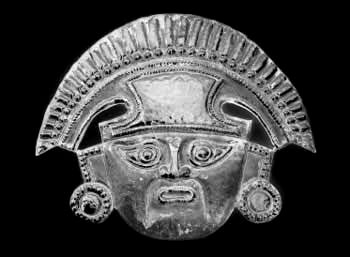
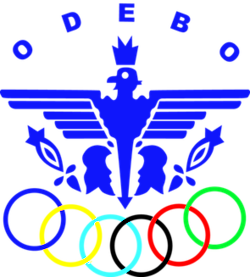
The member nations are Bolivia, Colombia, Ecuador, Panama, Peru and Venezuela.
Like nearly all South American countries Bolivia was heavily inspired by the Third Reich and National Socialism.


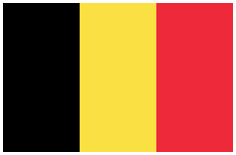



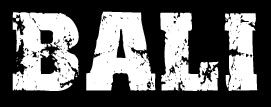
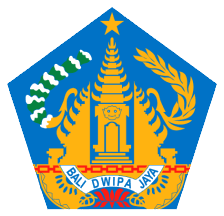



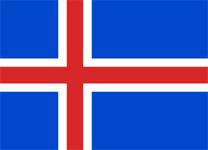

In the same year that Adolf Hitler became Reich Chancellor, 1933, the Nationalist Party of Iceland (Flokker Žjóšernissinna) and the Nationalist Movement of Iceland (Žjóšernishreyfing Islandinga) were formed, both of which were inspired by Germany's recent freedom and National Socialism. Not much is known about these two parties, but a split occurred a year later in early 1934.
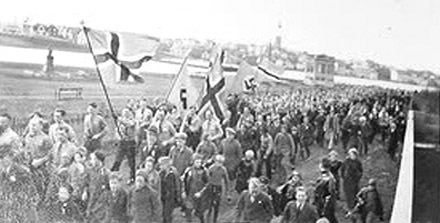
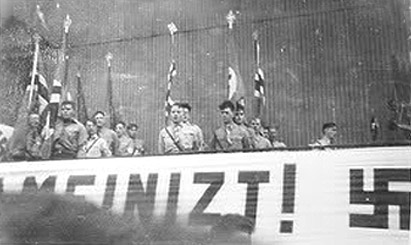
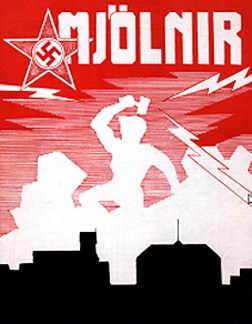


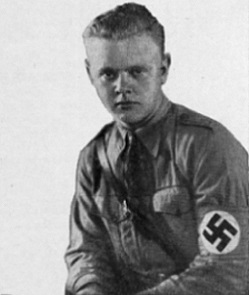
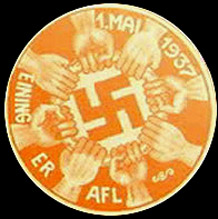



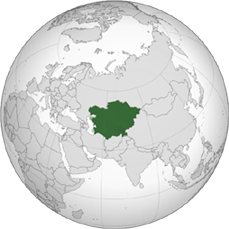






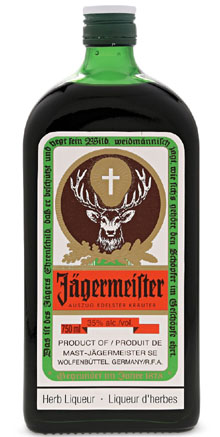
(2) The STG44 assault rifle, with Adolf Hitler even coining the term 'assault rifle'.
(3) Night vision, like the Zielgerät 1229, also known as the 'Vampir' scope, which was a revolutionary night vision attachment, designed to be fitted to the STG44 assault rifle. Night vision was also used on tanks.
(4) Radio controlled missiles. Air-to-air missiles, ground-to-air missiles and missiles of all kinds. The Germans were DECADES ahead of their enemies in this area, like in so many others fields.
(5) The V1 and V2 missiles which would lead to modern ICBM missiles and the space programs of Russia and the USA. They pioneered the world's first ballistic missiles. The V2 was the first ballistic missile and the first human-made object to achieve sub-orbital spaceflight.
(6) Animal rights and the protection of all living creatures great and small. The National Socialists were pioneers of animal conservation.
(7) The Z1 computer, the world's first freely programmable computer.
(8) Ejection seats for jets.
(9) The world's first practical helicopter, the Focke-Wulf Fw 61.
(10) Stealth technology and theory later used in the famed American B-2 Spirit jet bomber.
(11) Medicines and scientific equipment of all kinds and varieties.
(12) Superb submarine innovations and technologies, not to mention ground-breaking 'wolfpack' tactics.
(13) Synthetic rubber, synthetic sugar sweeteners and a host of other inventions to circumvent the Allied blockade.
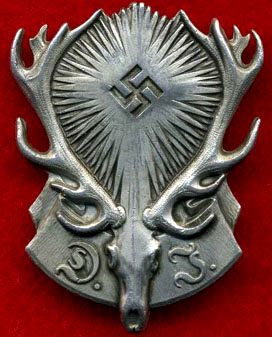



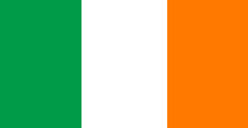

Congratulations from Guinness.']


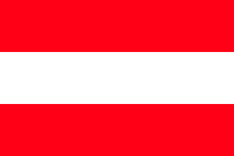


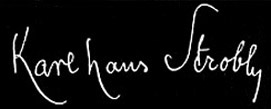

who are subjected to continuous suffering because of their sympathy
and unity with the whole German race and ideology.'
'One People, One Empire, One Leader']
it must in doing so have charged me with a mission,
and that mission could only be to restore my dear homeland to the German Reich.'
but when I crossed the former frontier [into Austria] there met me such a stream of love as I have never experienced.
Not as tyrants have we come, but as liberators.'

before one's own Volk, and before an eternal God who created the peoples.
And I made this decision two weeks ago, and it could not have been any different!
For when people become deaf to every precept of justice, the individual must take the law into his own hands!
For then he must recall that ancient commandment: "God helps him who helps himself!" And God has helped us!"
European history proves that this causes nothing but more intense fanaticism.
This fanaticism then forces the suppressor to employ ever more cruel and violent methods,
which in turn only increase the revulsion and hatred felt by the victims of this violence.'


-|-
Third Reich Philatelia
-|-
-|-
Third Reich Ephemera
-|-
-|-
Third Reich Awards
-|-
-|-
Third Reich Miscellanea
-|-
-|-
Third Reich Identification Books
-|-
-|-
Third Reich Currency
-|-
-|-
The Great War
-|-
-|-
Hand of Pandora
-|-
-|-
Waffen-SS Technical Information -|-
-|-
The European Volunteer Movement in WWII -|-
-|-
Copyright -|-